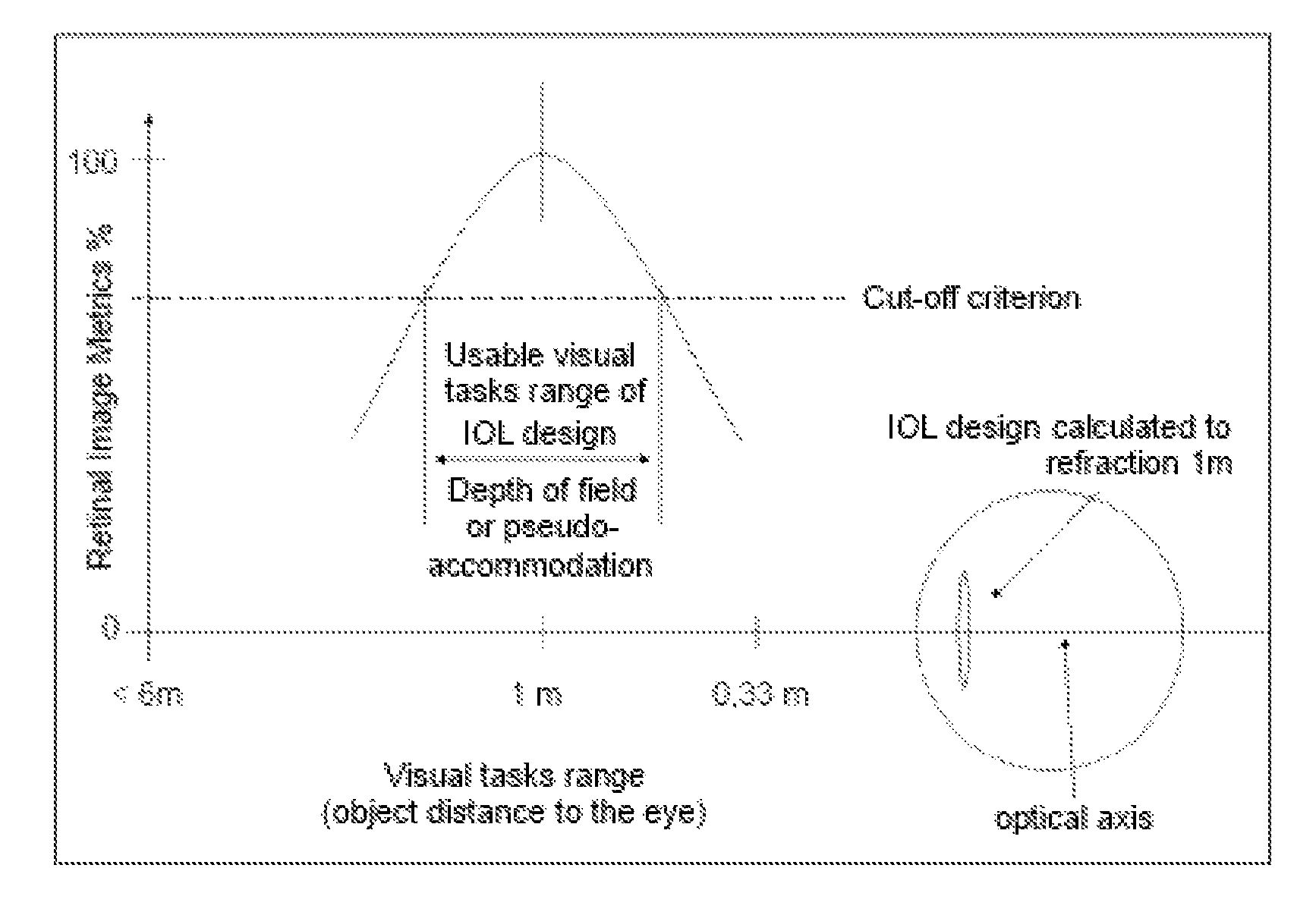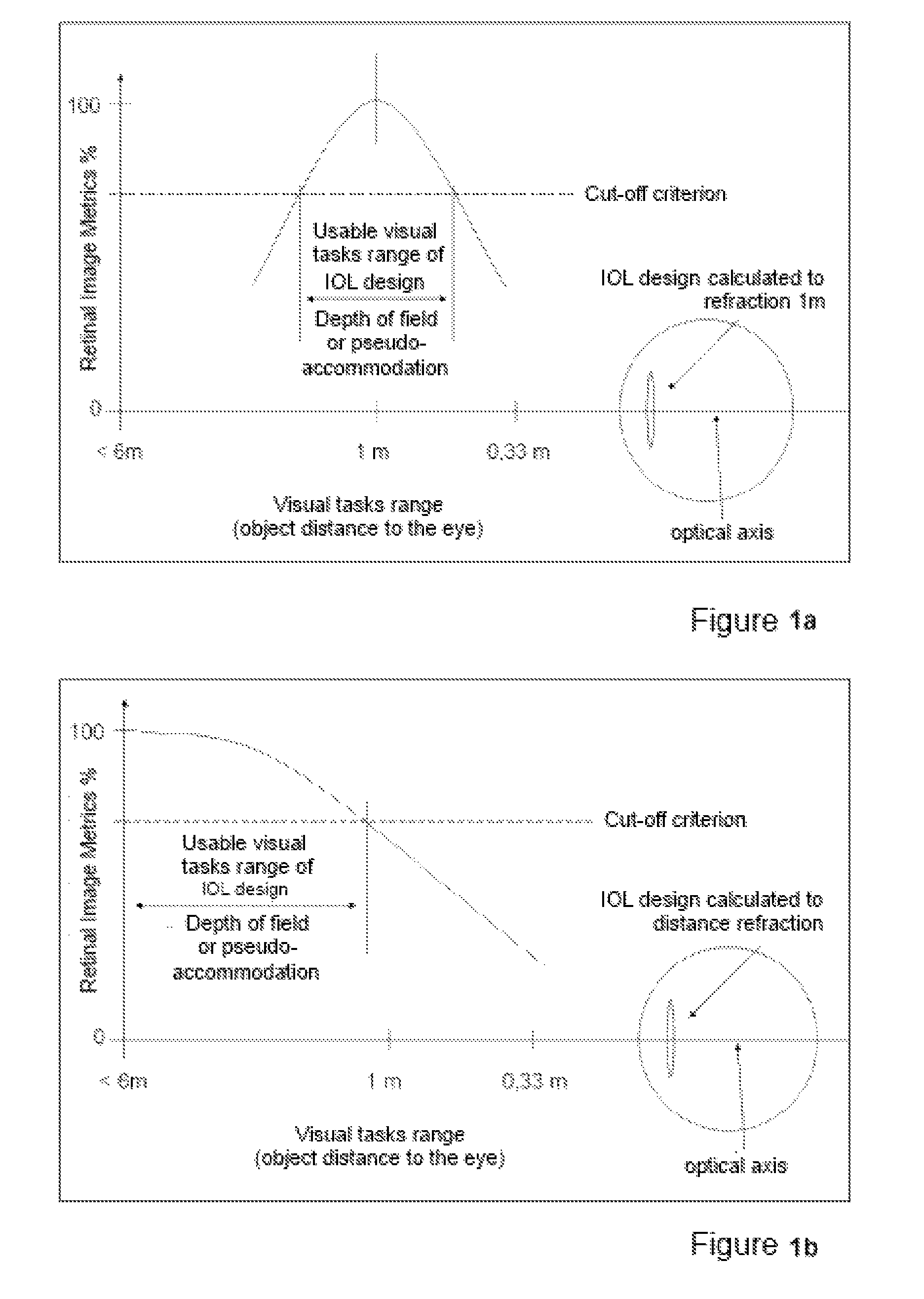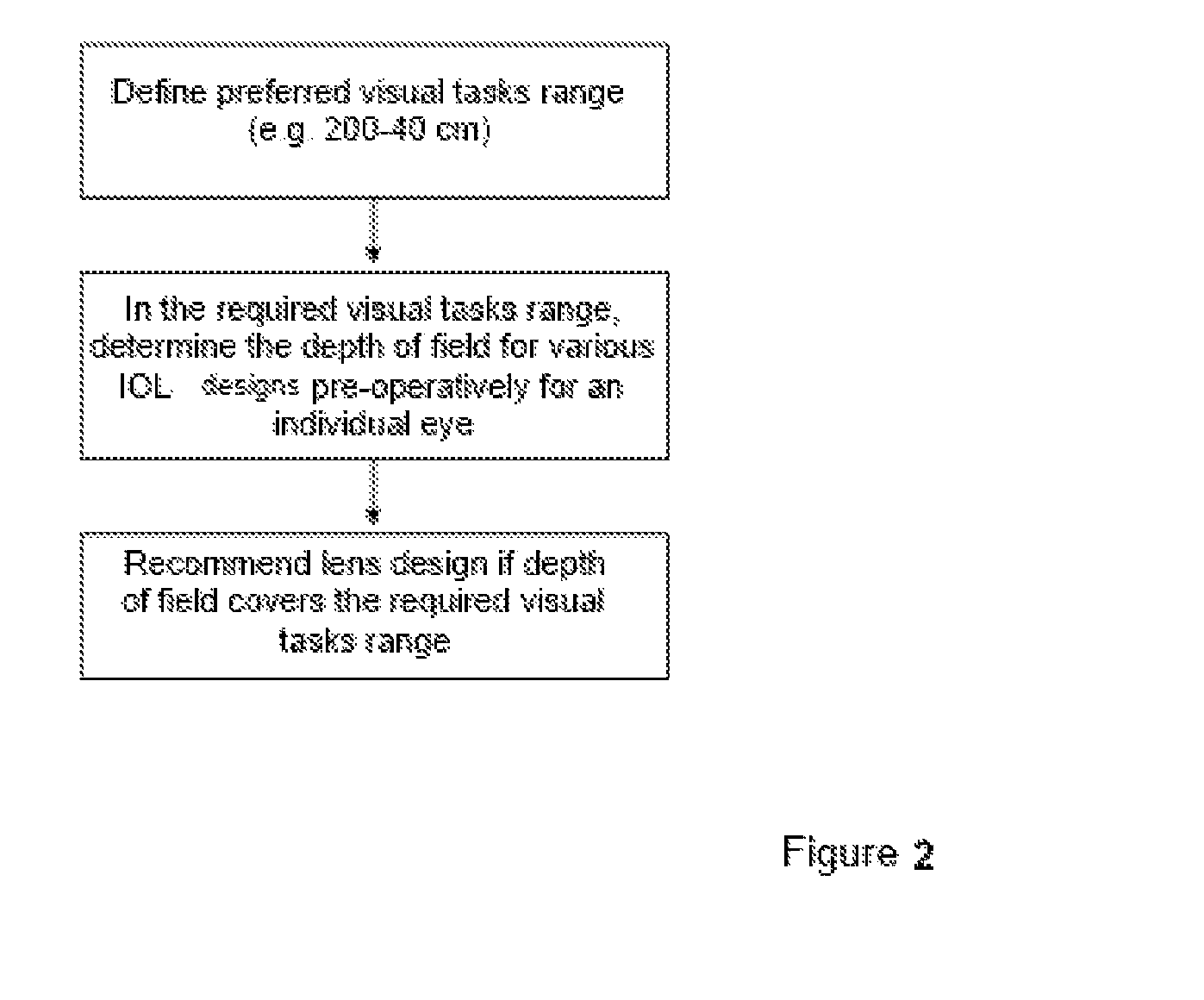Method for the pre-operative selection of an intraocular lens to be implanted in an eye
a pre-operative selection and eye technology, applied in intraocular lenses, medical science, diagnostics, etc., can solve the problems of increased statistic errors due in part to additional measured parameters, and achieve the effect of improving the result of refractive intervention and simplifying the selection process
- Summary
- Abstract
- Description
- Claims
- Application Information
AI Technical Summary
Benefits of technology
Problems solved by technology
Method used
Image
Examples
first embodiment
In the inventive method, the post-operative achievable depth of field is included as an addition parameter during the selection of the IOL to be implanted in an eye.
[0057]A prerequisite for calculating the achievable depth of field for an IOL-eye combination is the creation of an eye model having the individual biometric parameters of the eye in question. In addition to the corneal topography (curvature of the anterior surface or anterior and posterior surfaces of the cornea) and the biometry (axis length and anterior chamber depth) of the eye, as well as the parameters of the IOL, an assumption relating to the effective lens position (ELP) is also required for this.
[0058]The residual refraction is then calculated by means of ray tracing, it being possible to use different selection criteria or metrics for the calculation. It is obvious to use retinal image metrics, which enable a good correlation with subjective visual acuity, i.e. a result that is comparable to the perception of t...
fifth embodiment
[0099]In the inventive method, post-operative incision-related changes in the cornea are taken into account as an additional parameter.
[0100]This for example occurs in that the expected incision-related changes in the cornea are predicted from statistics for post-operative changes determined for a population and included in the calculation for the eye model.
[0101]In contrast to the previously described embodiments of the method, the parameter that is also to be included in the calculation for improving the selection does not relate to any post-operative effects of the selected IOL but rather relates to the surgical technique used.
[0102]A quantitative criterion for the selection of a suitable IOL are post-operative incision-related changes in the cornea, regardless of whether these changes in the cornea necessarily resulted or, as for instance with the “limbal relaxing incision,” are desired. With this technique, intentionally larger incisions are made in the cornea in order to cause...
PUM
 Login to View More
Login to View More Abstract
Description
Claims
Application Information
 Login to View More
Login to View More - R&D
- Intellectual Property
- Life Sciences
- Materials
- Tech Scout
- Unparalleled Data Quality
- Higher Quality Content
- 60% Fewer Hallucinations
Browse by: Latest US Patents, China's latest patents, Technical Efficacy Thesaurus, Application Domain, Technology Topic, Popular Technical Reports.
© 2025 PatSnap. All rights reserved.Legal|Privacy policy|Modern Slavery Act Transparency Statement|Sitemap|About US| Contact US: help@patsnap.com



